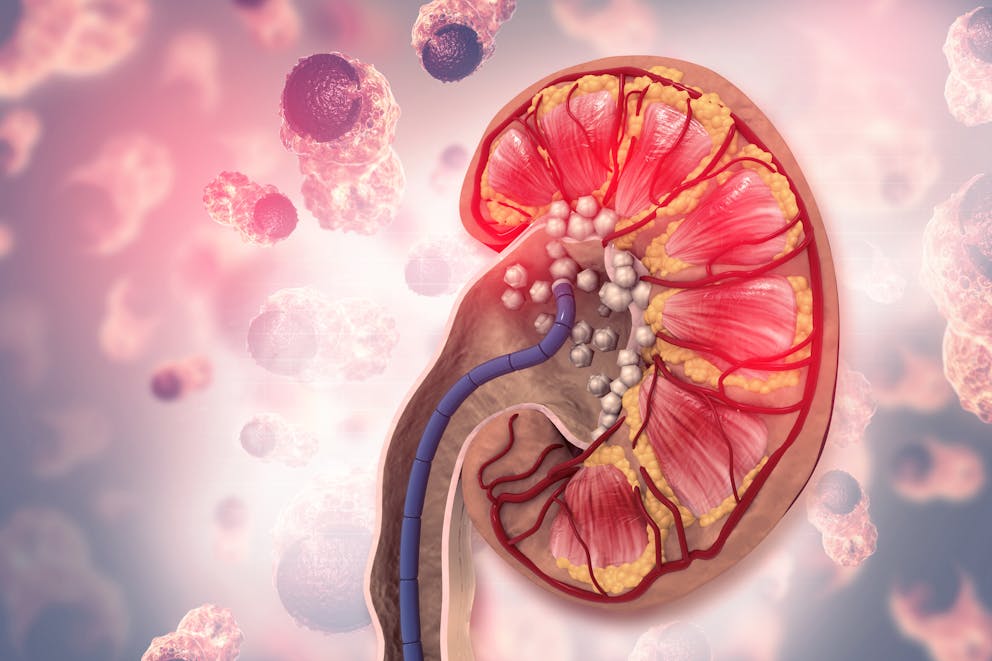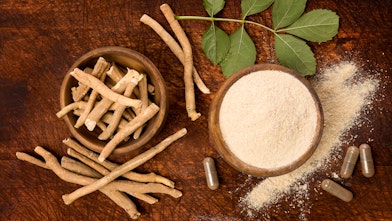Avoid ALL Keto Side Effects Easily
Starting a ketogenic diet can be a big change for your body. You might have friends who've tried it, raving about their results, but what they might not tell you about is the transition and potential keto side effects that could come along the way.
The problem with some people starting keto is that they are not fully aware of keto side effects. People can prevent most keto side effects with a few simple adjustments.
Let's go through them so you can get the best results. Sticking to a structured plan from the beginning is very important, and the healthier version of the ketogenic diet is key for long-term success.
Understanding Keto Side Effects
Switching to a keto diet can sometimes lead to a few temporary effects. Many encounter things like brain fog or slight digestive changes as the body adjusts. Feeling a bit off can be worrying, but it's often part of the adaptation.
You might find that you have less energy than usual initially. This dip usually passes as your body gets used to burning fat for fuel instead of carbs.
Brain Fog
Experiencing brain fog on keto can happen from a shortage of B vitamins, especially B1. In the initial stages of keto, typically around three days, the brain might struggle to generate enough ketones.
Increasing your ketone intake with MCT oil might offer a solution. Nutritional yeast is another effective aid that gives more fuel to your brain cells.
This makes that foggy feeling slowly disappear as the transition occurs. Brain fog can also signal a need for more B vitamins, which helps in adjusting smoothly to keto.
Uric Acid Increase
For some, fasting and starting keto may increase uric acid levels. Uric acid acts as an antioxidant. But for those prone to gout, this could cause discomfort, typically in the big toe.
Alkalizing with a green drink like wheatgrass juice powder can help. Potassium citrate can work, but a green drink often does an even better job in this context.
Potential for High Cholesterol
High cholesterol readings can suggest a need for more bile salts. These support the gallbladder's function in processing cholesterol. This problem usually resolves with continued adjustments in your keto program.

Kidney Stone Risks
Kidney stones can form under conditions of supersaturation. It is important to drink at least two and a half liters of fluid each day. This will keep you from ever forming another kidney stone.
Potassium citrate plays an important role by both protecting the kidney and decreasing the risk of forming stones. It's also beneficial to be mindful of your diet.
Avoid foods high in oxalates such as almonds, spinach, and even chocolate, as these are really commonly used by those who start keto, so it could become problematic.
Adjusting to Digestive Changes
If constipation or diarrhea starts after adopting the keto diet, you'll probably want to look at your vegetable intake. Sometimes a matter of tweaking the amounts helps your digestive system get back on track.
Too many vegetables may cause bloating for those whose bodies struggle with excessive fiber; cutting back may be necessary to restore comfort.
Bloating could be due to a lack of bile production, indicating a fatty liver or sluggish digestion. Adding more bile could give significant support in this case. People find this beneficial for a host of health-related issues.
Dealing with Abdominal Pain
Abdominal pain may surface due to lectins present in various vegetables, beans, and peanuts. Temporarily eliminating vegetables from your diet may provide support. People suffering from acid reflux may experience this abdominal pain.
The solution often involves needing acidifiers like betaine hydrochloride or apple cider vinegar. They can strengthen the stomach's valve closure.
Skin Problems
Acne can also occur which can sometimes point to a sensitivity to dairy products. Cutting out dairy could help clear up skin problems. Sometimes, people might experience the growth of fibroids or prostate issues.
Managing Muscle Cramps and Heart Palpitations
Muscle cramps and heart palpitations often signal a need for electrolytes, including magnesium, potassium, and sea salt.
Replenishing these electrolytes helps maintain proper muscle and heart functions. Magnesium is needed for more than 300 different reactions in the body.
Muscle cramping can result from magnesium deficiency, so you'll need supplementation to avoid that.
Electrolyte loss also may occur. Many of these things can come from a loss of electrolytes, and drug side effects include cramping.
Overcoming Irritability and Headaches
Irritability and headaches while on keto might stem from a lack of vitamin B1. Nutritional yeast has been shown to significantly improve mood. You usually feel better in less than three minutes.
Gallbladder Issues
Gallbladder discomfort, marked by pain in the right shoulder or back, could show you need to decrease nut consumption. Many nuts are high in omega-6 fatty acids.
A more important problem could stem from certain nuts that often contain harmful toxins. Choosing organic nuts could make things a bit easier.
You probably want to reduce the fat, specifically oils. Several articles, including the post-exposure prophylaxis, show that drugs could have side effects like gallbladder issues.
Addressing Bad Breath
Bad breath that may arise from a ketogenic diet sometimes shows not getting enough leafy greens. You also may have problems with digesting certain proteins.
Handling Keto Rash
Keto rash might indicate a deficiency in B vitamins, notably B2 and B3. Increasing the consumption of nutritional yeast helps. Fat burning can sometimes up the needs of these two B vitamins.
Nutritional yeast is highly effective for avoiding this skin problem. You also need to have other certain vitamins as well. Scientific articles on "WebMD" covering drugs point to common side effects from skin reactions.

Combatting Keto Fatigue and Flu
Combatting keto fatigue and flu symptoms may be easier if you increase sea salt intake or by having an electrolyte powder. Fluctuations in blood pressure may benefit from experimenting with sea salt levels.
Symptom | Potential Solution |
Brain Fog | Increase vitamin B1, add MCT Oil, and use nutritional yeast. |
Uric Acid (Gout) | Consume wheatgrass juice powder or potassium citrate. |
Kidney Stones | Drink 2.5 liters of water, add potassium citrate, and avoid high-oxalate foods. |
Digestive Issues | Adjust vegetable intake. For bloating, take bile salts. |
Muscle Cramps | Add electrolytes (magnesium, potassium, sea salt). |
Gallbladder Pain | Reduce intake of nuts and take bile salts if needed. |
Dealing With Sleep Problems
People sometimes see their blood pressure as a major issue while on the ketogenic diet. This fluctuation in blood pressure levels might show you need to modify your sodium intake. Some may require you to reduce the intake while others may need more.
Low sodium intake may sometimes elevate your body’s level of adrenaline. More sea salt helps reduce some of these things, while others are better supported by foods such as cheese, which gives good quantities of calcium.
Using Comforting, Keto-Friendly Meals to Ease Side Effects
When starting a ketogenic diet, some individuals experience side effects like fatigue, headaches, and digestive discomfort—often referred to as the "keto flu."
These symptoms stem from the body's transition from burning carbohydrates to burning fat for energy. To ease this adjustment, staying hydrated, replenishing electrolytes, and consuming nutrient-dense meals that provide lasting energy is essential.
For instance, preparing a hearty chicken pot pie with a keto-friendly crust can be a comforting way to nourish your body during this transition.
You create a meal that supports energy levels without disrupting ketosis by replacing traditional flour with almond or coconut flour and using a creamy, low-carb filling made from chicken, vegetables, and healthy fats.
The familiar flavors can also provide a sense of satisfaction, helping you stay committed to the diet while your body adapts to its new fuel source.
Over time, these well-balanced meals can help minimize keto side effects and promote a smoother, more enjoyable transition.
Conclusion
Managing keto side effects is simple, with little insight into why the keto diet can cause discomfort. Knowing how to handle things helps the transition as you adjust to this lifestyle, which makes the changes more sustainable.
Most find the switch manageable with small changes as issues appear by paying attention to details of how keto side effects change for you.
FAQs about keto side effects
What are the negative effects of a keto diet?
Negative effects can include short-term issues such as fatigue, headache, and digestive upset. Long-term risks might involve nutrient deficiencies or kidney stones if the diet isn't managed well. Most issues can be easily prevented and corrected.
Can ketosis make you feel sick?
Yes, transitioning into ketosis can make you temporarily feel unwell. But don't worry. This is the body adapting to using fat instead of carbs for energy, and it gets better with time.
Previous blog
The Side Effects of Skipping BreakfastNext blog
Gastric Ulcers Are a Zinc DeficiencyTags

Popular
08/21/2024
55.7K views
02/23/2025
46.8K views
11/18/2024
281.2K views
03/18/2024
11/21/2022




